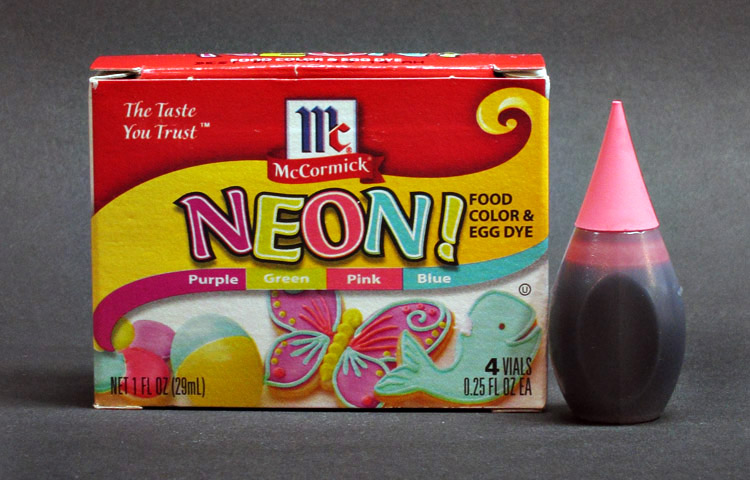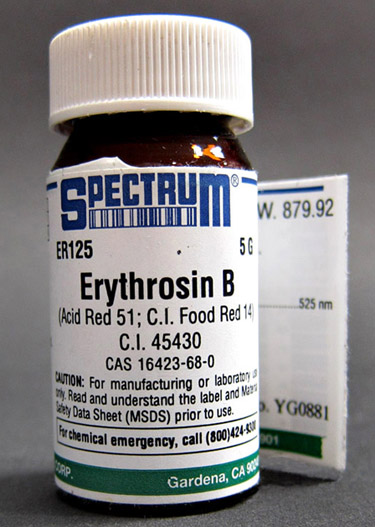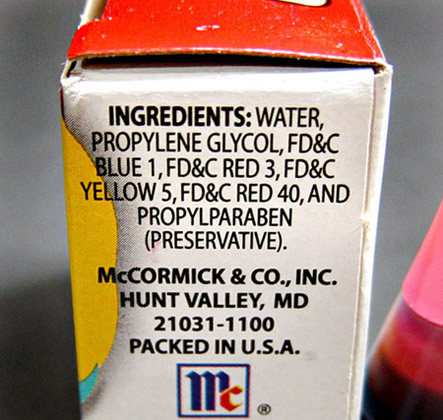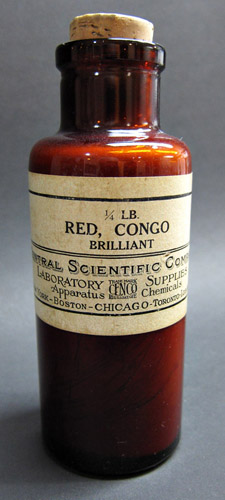Erythrosin in the Emulsion
January 18, 2012
Orthochromatic sensitization. It's the most delightful combination of amazingly simple and amazingly complex. I have a (very) rudimentary understanding of the chemistry involved, but mostly I don't think it's required. The information is available in the old texts. We can go through the same learning curve as our predecessors. Except, of course, we know ahead of time what can be done. Fortunately, a spoiler alert doesn't ruin the fun.

FD&C Red 3. Erythrosin B. Acid Red 51. — different names for the same chemical. "Neon!" pink food dye is Red No. 3. Propylene glycol is also an ingredient in PhotoFlo 200. McCormick must have made up the dye just for us (surely it wasn't meant for food for small children!)

For the first go at "TLF-Ortho", I had intended to start very conservatively with a light pink solution of Erythrosin B (inexpensive and easy to get.) I mixed 10 drops of Everclear and 10 drops of water. I just barely touched the erythrosin powder with the tip of the wide end of a clean flat wooden toothpick and stirred the toothpick in the alcohol/water. I added the solution to the emulsion at the start of the fourth (and last) 15 minute ripening period of "TLF#2".
But, right after that I had a flash that I didn't want to be conservative. I had the McCormick pink food dye in the darkroom to try next time, but I quickly poured 20 drops of water (approx. 1 ml) in a tiny beaker and added 1 drop of the dye. After mixing, I added 3 drops of the dilution to the emulsion and stirred a minute. The emulsion finished ripening another 10 minutes. The only other change I made to "TLF#2" was that I cooled the emulsion for coating more quickly than usual in a waterbath of cold (refrigerator temp) water. The base fog of both the colorblind emulsion and this ortho variation are identical.
I don't know, of course, if the combination of erythrosins is necessary. I broke my own cardinal rule of research — I changed more than one variable. But my intuition served me well and I strongly suspect that food dye alone will do the trick. I'll try 6 drops of the 1 drop dye/20 drops water dilution.
There are other orthochromatic sensitizers to try. Each hits a slightly different absorption wavelength. Rose Bengal, Congo Red, and Eosin are all candidates. Erythrosin hits around 525 nm. Rose Bengal: 550 nm, and Congo Red: 500 nm. It is a mistake, though, to put too much faith in these numbers. There are a lot of brain-twister variables. Among other things, absorption wavelength is influenced by both dye concentration and pH. The philosophy I've taken to heart — once again — is that of a good cook. Know a few basics. Experiment liberally. Observe. Practice. Play with your food. Repeat.

I found this in an antique store that specializes in old pharmaceutical tools and materials. The dye is a solid lump in the bottle. I won't be using it for my emulsions, but I couldn't resist. The oldtimers had a real sense of style and beauty. Every tool and every bottle was its own work of art.
Note: I live on an exposed coastal headland and we've been clobbered by a storm for almost two days. The power has been flickering and I haven't dared turn on my Nikon 9000 scanner. If/when it dies, it can't be replaced. But, the wind is dying down and hopefully soon I can get last weekend's negatives posted along with the filters piece of the puzzle.
Continued...
